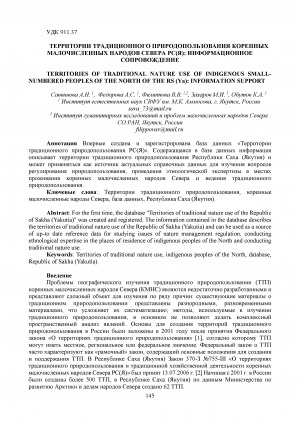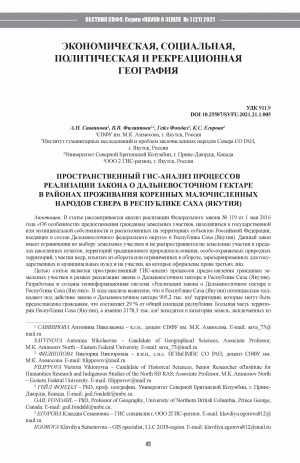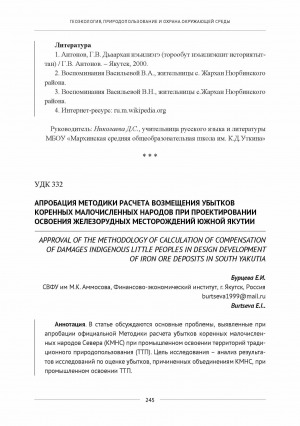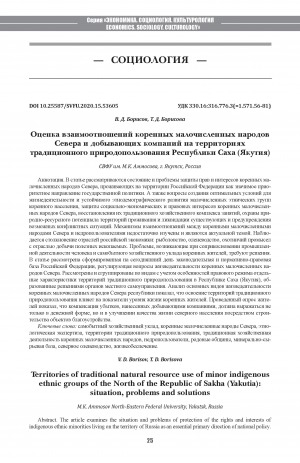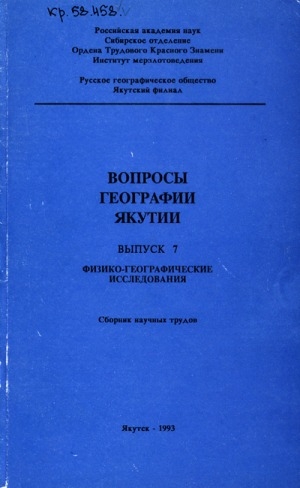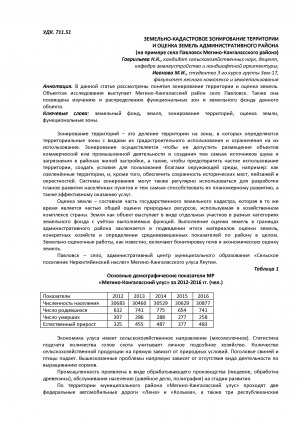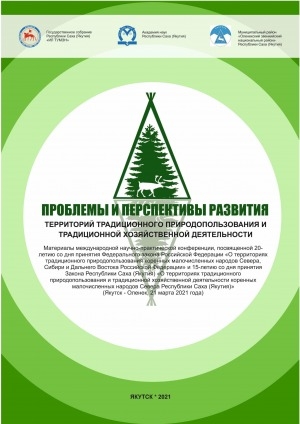Статья посвящена проблеме функционального зонирования территорий традиционного природопользования. В данной работе на примере двух территорий традиционного природопользования "Беллёт" и "Анамы", расположенных в Алданском районе Республики Саха (Якутия), предложено выделение функциональных зон внутри них. За основу зонирования взяты зоны особо охраняемых природных территорий в Якутии. Проведено сравнение зон особо охраняемых природных территорий и территорий традиционного природопользования. Авторами предложено зонирование на основе учета землепользователей на территориях традиционного природопользования и имеющихся ограничений. Предложено выделить следующие зоны внутри ТТП "Беллёт" и "Анамы": 1 - запретная для посещения (зона особой охраны для сохранения ресурсного потенциала - зоны абсолютного покоя ООПТ, места нереста рыб, отела оленей и т.п.); 2 - строго регулируемого посещения (зоны ТТП в ООПТ, охотничьи угодья, линии электропередач, технологические дороги, нефтепроводы и т.п.); 3 - зона свободного посещения (места проживания малочисленных этносов, местонахождения объектов историко-культурного наследия). Предложенная модель зонирования ТТП, проведённая с использованием комплексной оценки территории, позволит упорядочить существующую ситуацию с наложением участков нескольких землепользователей. Предложенное зонирование ТТП является обоснованным конкретным предложением по функциональному зонированию территорий традиционного природопользования с рекомендациями по его внедрению. Результаты исследований могут быть учтены при внесении изменений в соответствующие нормативные документы в части реализации государственной политики по защите и сохранению жизнедеятельности коренных малочисленных народов Севера, Сибири и Дальнего Востока. Исследование осуществлено за счет гранта Российского научного фонда ө 21-17-00250 "Межрегиональные и внутрирегиональные коммуникации коренных малочисленных народов Севера в условиях глобальных вызовов: история и современность".
The article is devoted to the problem of functional zoning of territories of traditional nature use. In this paper, on the example of two territories of traditional nature use "Bellet" and "Anamy", located in the Aldan district of the Sakha Republic (Yakutia), the allocation of functional zones within them is proposed. Zones of specially protected natural territories in Yakutia are taken as the basis of zoning. The comparison of zones of specially protected natural territories and territories of traditional nature use is carried out. The authors proposed zoning based on the consideration of land users in the territories of traditional nature use and existing restrictions. It is proposed to distinguish the following zones within the territories of traditional nature use “Bellet” and “Anamy”: 1 - forbidden to visit (a special protection zone to preserve the resource potential - zones of absolute rest of protected areas, fish spawning sites, reindeer calving, etc.); 2 - strictly regulated visits (zones of territories of traditional nature use in protected areas, hunting grounds, power lines, technological roads, oil pipelines, etc.); 3 - free visit zone (places of residence of the Indigenous peoples of the North, locations of objects of historical and cultural heritage). The proposed zoning model of the territories of traditional nature use, carried out using a comprehensive assessment of the territory, will allow to streamline the existing situation with the overlap of several land users’ plots. The proposed zoning of the territories of traditional nature use is a reasonable concrete proposal for the functional zoning of the territories of traditional nature use with recommendations for its implementation. The results of the research can be taken into account when making changes to the relevant regulatory documents regarding the implementation of the state policy for the protection and preservation of the vital activity of the indigenous peoples of the North, Siberia and the Far East. The study was funded by the Russian Science Foundation, project No. 21-17-00250 ҺInterregional and intraregional communications of the indigenous peoples of the North in the context of global challenges: history and modernityһ.




